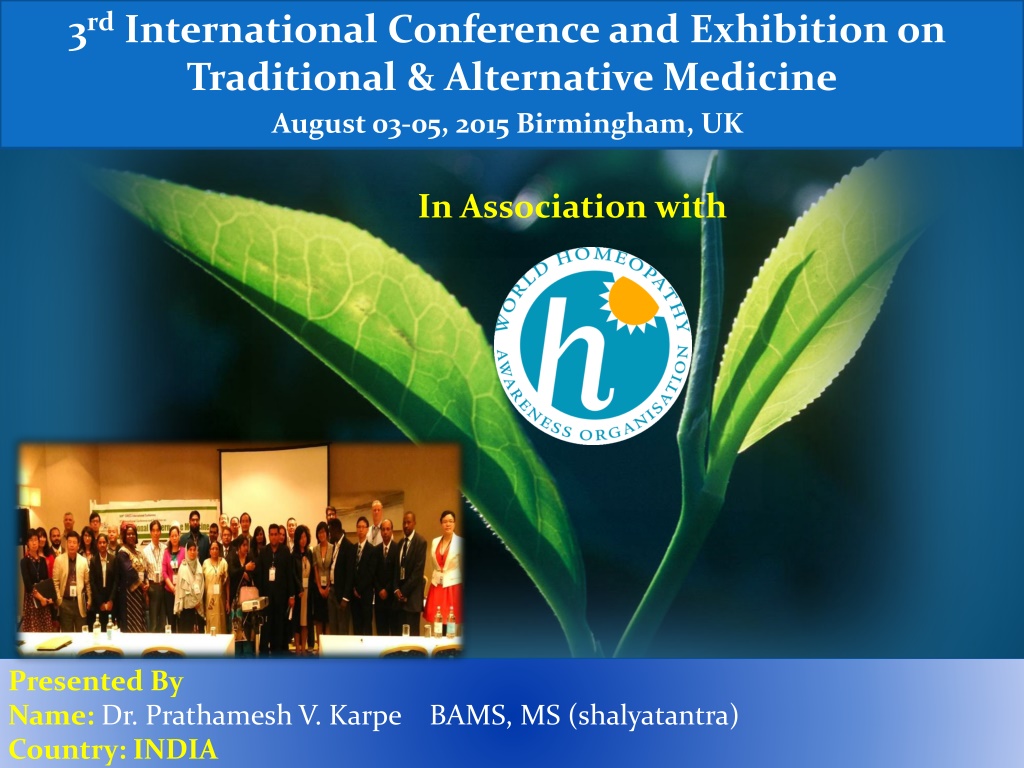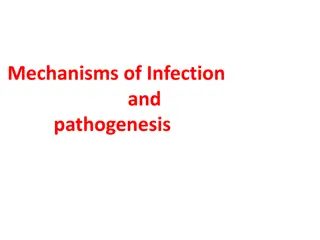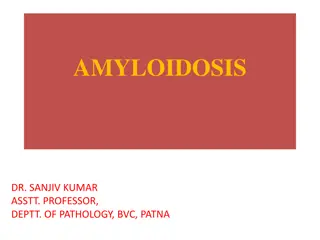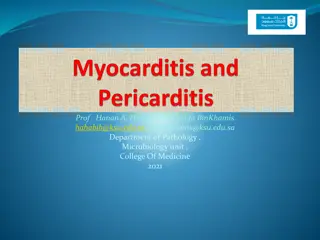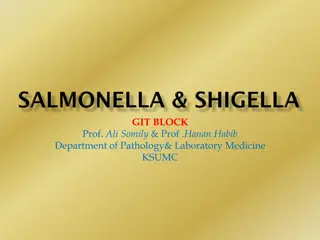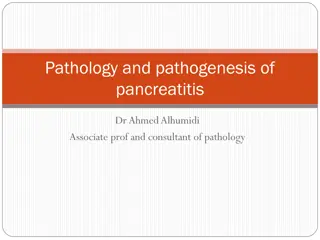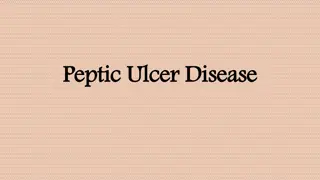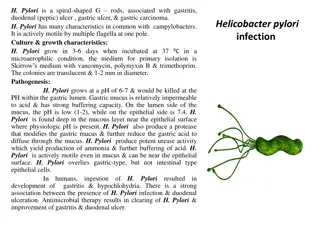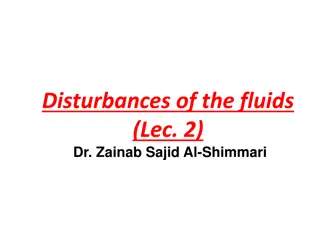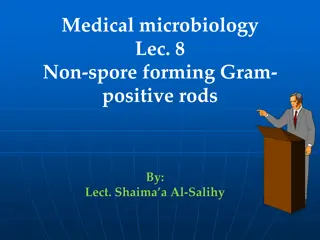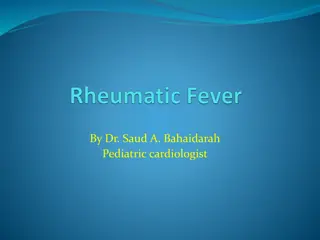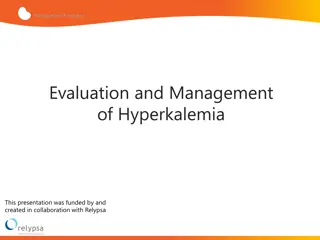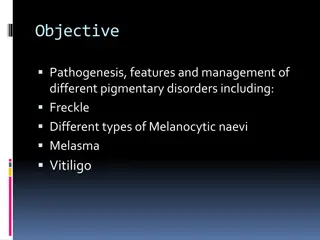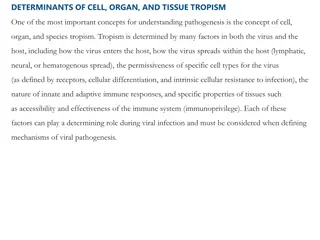Understanding Urolothiasis: Causes and Pathogenesis Explained
Urolothiasis, commonly known as kidney stones, is a condition where stones form in the urinary system. This article delves into the causes and pathogenesis of urolothiasis according to Ayurveda, discussing how imbalances in the body lead to the formation of stones. The process is explained through Ayurvedic concepts such as doshas and basti, shedding light on the factors contributing to this condition.
Download Presentation

Please find below an Image/Link to download the presentation.
The content on the website is provided AS IS for your information and personal use only. It may not be sold, licensed, or shared on other websites without obtaining consent from the author. Download presentation by click this link. If you encounter any issues during the download, it is possible that the publisher has removed the file from their server.
E N D
Presentation Transcript
3rdInternational Conference and Exhibition on Traditional & Alternative Medicine August 03-05, 2015 Birmingham, UK In Association with Presented By Name: Dr. Prathamesh V. Karpe BAMS, MS (shalyatantra) Country: INDIA
By Dr. Prathamesh V. Karpe BAMS, MS (shalyatantra) Consulting surgeon and Lecturer in Dept of shalyatantra Gomantak Ayurveda mahavidyalaya & Research centre, Shiroda Goa- India
What is Urolothiasis It is commonly known as kidney stone or urinary stone In sanskrit it is known as Ashmari In India, the stone belt occupies some parts of Maharashtra, Gujarat, Punjab, Haryana, Delhi and Rajasthan
/ (tulyataamshmana yaanti tasmaatashmari vidu) Ashmari or calculus looks like small gravels/stones hence they are termed as ashmari
What are its causes s // ( . . ) 2. / s // ( . . ) Due to improper purification of the body and by following the improper diet and lifestyle, kapha dosha gets vitiated in the urine and reaches in the basti to form ashmari. According to charakacharya- the shukra dhatu in the basti gets dried up along with Pitta or Kapha dosha by Vata forms Ashmari like how Gorochana forms in Gallbladder of cow. 1.
Pathogenesis- samprapti 1. s / s // Vata-Pitta-kapha dosha enters into basti like how mutra enters into basti from Pakwashaya and with Upasneha nyaya Ashamari is formed in Basti.
/ // ( . . - ) When clear water is placed in a new mud pot, after sometimes some particles precipitates into the water, similarly in the basti ashmari develops- this explains the stagnation of the urine in the bladder due to bladder outlet obstruction like BPH etc can form calculus in the bladder. 1.
s / / It explains the crystallization process- when dry air along with the static electricity in the clouds forms the crystalls of water present in the cloud, similarly ashmari develops.
Purvaroopa - // Pain and discomfort in the bladder, urethra,testicles/external genital organs. Anorexia, dysuria, fever, debility, smell of goat s urine. Colour of urine appears like that of individual doshas and pain accordingly. urine appears non-clear, increased specific gravity.
Types Kaphaja 1. 2. Vataja 3. Pittaja 4. shukraja
Samanya lakshana Pain in the umbilicus,bladder, perineum, external genitals eithr in any one of them while passing urine. Obstruction to the urine stream Hematuria Urine appears clear as Gomeda or some crystals can be seen in urine. Discomfort or pain while performing the activities like running, swimming, hanging, swimming,riding on back of horse,camel.
Vataja Ashmari Vata and kapha dosha after combining together obstructs the urine and causes pain as a result person bites his teeth, presses navel, external genitals,anus and shouts due to pain. Has to pass urine after putting force. The ashmari formed is Shyava, hard, irregular,rough, it contains thorny structures like of kadamba Pushpa.
Pittaja Ashmari Kapha dosha along with Pitta dosha attends compactness and obstructs the urine and produces discomfort like burning sensation in the basti- medhra, feeling of hot air coming out of bladder. Ashmari appears like red,yellow, dark in colour and appears like seed of Bhallataka
Kaphaja ashmari The Kapha dosha attends compactness and increases in size and obstructs the urine and produces features like tearing type of pain in bladder, heaviness in the bladder and feeling of cold. Ashmari appears like hen s egg, pale-white colour, unctous to touch, large in size and like madhuka flower.
Madhuka pushpa kukkutanda
Shukrashmari Causes = shukraveghdharan or excessive coitus. The vitiated vata causes vimargagaman of shukra into medhra or vrushana and after drying it up forms the shukrashmari. The resultant ashmari obstructs flow of urine and causes dysuria, pain in bladder and external genitals, oedema in legs. On pressing the ashmari it gets broken into pieces easily.
Ashmari in children Due to kapha avastha more chances of forming ashmari Occurs in those children who follows life style and diet which increases and vitiates kapha Ashmari can be of any 3 doshas Due to thin bladder wall and under developing basti, ashmari is small in size and can be easily removed with instruments Due to non development of shukra dhatu, there are no chances of forming shukrashmari
chikitsa Newly formed ashmari can be treated with medicines Chronic- surgical removal
Medicinal treatment Vataja ashmari- pashanbheda,vasuka,shatavari,gokshura,bhruhati, kantakari etc drugs should be used in form of kshaar, yavagu,kwatha,milk,food etc. Pittaja- kusha-kasha-sara-gundra-itkata- morata(sugarcane root),pashanbhedh,vidaari- varahkanda- shaalimoola,gokshura,shyonaka,punarnava,shirisha,lo tus seed, evaru(cucumber) etc
Kaphaja ashmari- varunadi gana,guggulu,ela,kushtha, devdaru,haridra,maricha,chitraka etc drugs in form of kshar, peya,kshira,yavagu,kwatha. Kshara prepared from tila,apamarga,kadali,palasha and yava kalka with sheep s urine prevents sharkara formation
Use of Ghrita, Kshara,kashaya, kshira and Uttarbasti are advised. If no relief with above medications then surgical extraction of calculus should be performed.
Surgical extraction Purvakarma- consent from the king, snehan-swedan- vaman-virechana, food should be given to the patient. Mangala-swastik vachan Collection all required instruments and medicines required during surgery
Pradhana karma This technique is Perineal Vesicolithotomy Position is lithotomy postion, head resting in lap of attendant Sneh is applied on nabhi and pressure massaging in done on left lateral region till ashmari decends into Basti. Lubricated middle and index finger is inserted into anal canal of the patient. Calculus is then pushed with those fingers in upward direction towards in between guda and external genital. Ashmari can be seen as nodule
While performing this procedure if patient becomes unconscious or goes into shock, in such condition procedure should be hold and extraction shouldn t be done. Site of incision- vamaParshwa (left lateral) 1 yava(grain) distance from the sevani(perineal raphe). Incision should be adequate to remove stone While extracting the calculus, it should be brought out without crushing it. Otherwise it can cause recurrence. Instrument used is (curved forcep)
In case of female uterus should be protected, incision should not be too deep otherwise it causes vrana through which urine oozes out. Avoid damaging important structures like mutravaha,shukravaha,mutrapraseka,sevani, yoni,guda,basti.
Damage to- Mutravaha srotas and Basti-death due to extavasation of urine 2. Shukravaha srotas-death or infertility 3. Mushkasrot- dhwajabhanga (erectile dysfunction) 4. Mutraprasek- vesical fistula urine discharge 5. Sevni and yoni- severe pain 6. Guda and basti- death 1.
Paschat karma Patient should be kept in hot water tub, this prevents collection of blood in bladder. If blood gets collected in bladder then Uttarbasti of kshirvruksha kwatha should be administered, it removes the collected blood out of bladder (bladder wash) For mutramargavishodhana rice mixed with jaggery should be given. After removing from tub, apply honey+ghrita on the incision wound
For diuresis- trunapanchamoola,gokshura etc drugs in the form of yavagu is given 2-3 times a day. For rakta-mutra shodhan and vrana kledanartha- jaggery mixed milk along with cooked rice is given in small quantity for 10 days. After 10 days- sour fruit like dadima and jangala mamsa rasa is given. Carefully snehan and drava swedan is performed. Clean wound with kshiravruksha decoction. Apply lepa of rodhra,madhuka,manjishtha,prapaundarika kalka
If urine doesnt come through its normal route and comes out from incision site (vrana), then it should be thermally cauterized ( agnikarma). After urine comes out via normal route, uttarbasti, anuvasan and niruha basti are given prepared from kakolyadi gana or Kshiravrukshadi gana.
Obstructed shukrashmari or sharkara should be removed with badisha yantra Avoid coitus, horse-elephant-camel ride, climbing mountain, riding chariots, swimming, heavy to digest food for 1 year after healing of the wound.
Commonly used medicines in treatment of Ashmari Eranda Kantakari Gokshura Ikshumoola Apamarga Shatavari Brihati Yava kulattha 1. 2. 3. 4. 5. 6. 7. 8. 9. Above all drugs with sweet curd helps in breaking of Vataja ashmari
Kusha Kasha Shara Pashanbheda Darbha Vidarikanda Varahikanda Shalimoola Gokshura Patha Punarnava Shirisha Above drugs either in decoction of medicated ghee helps in breaking the pittaja ashmari
Treatment of kaphaja ashmari Drugs from Viratarvadi gana Varunadi gana Mushakadi gana The medicated ghee prepeared with either one of the group along with guggulu, maricha, kushta,chitrak. Also various types of kshar (alkalies), kshira(medicated milk), yavagu(gruels) are used in the treatment.
Formulations used Suvarnarajvangeshwar rasa 1. 2. Gokshuradi guggulu 3. Badarashma pishti 4. Sangehyahud bhasma 5. Yavak kshar 6. Apamarga kshar 7. Shwetaparpati
Panchakarma Before starting any formulations first purification of the body should be performed depending on doshic dominances Vaman (kapha dominant) Virechana (pitta dominant) Niruha Basti (vata dominant)
To do- pathya What to eat? Yava Kulattha Purana shali Purana kushmaand phala Shighru Things to do Avagaha sweda Seasonal purification-vaman,virechan,basti
not to do Holding of natural urges like urine/faecal Foods which causes indigestion- acidic in nature Stale food Aerated drinks Incompatible food Dry food
Case presentation A male 48years old came to the shalya OPD of the GAM&RC Goa with recurrent pain in lower abdomen shifting to the groin along with burning micturation and nausea. He is Truck driver by profession. He was diagnosed with bilateral renal calculus at J&K by private GP and was referred to urologist for sugrical treatment. He was not having any history of other major illness.
O/e all vitals were stable. Nadi parikshan- Vata kapha Prakruti- Kaphapradhan pittanubandi Eyes-NAD Tongue- saam (coated) Mala- constipated Mutra- burning micturation Akruti- thin Srotas- annavaha sroto and mutravaha srotodushti
USG abdomen on 19/2/14 showed 7 calculi in the left kidney, two in the middle calyx 3mm & 2nd 4mm, Three in the inferior calyx- 1st 3mm, 2nd 4mm & 3rd 4.3mm and two in the superior calyx 1st is 5mm and 2nd 6mm in size. Six calculi in right kidney- Two in middle calyx- 6.5mm and 4mm in size Two in the inferior calyx- 5.7mm and 5mm in size
Kidney function test was normal Urine analysis revealed oxalate crystals along with increased pus cells and cast cells Ayurvediya diagnosis- Mutrashmari- Vata-kaphaja
Treatment Ama pachan 2) Agni dipana 3) Vata-anuloman 4) Ashmari bhedan 5) Mutra virechana 1)
Drugs used Combination of gokshura+erandamoola+pashanbheda+punarnava+s hatavari+chitraka+haritaki in the decoction form 40ml two times a day before meals 2) Yavakshar 200mg along with above decoction 3) Gandharva haritaki 2gm at night time with hot water 4)Pathya was advised 1)
Post treatment USG Date- 24/9/2014 Left kidney shows 5mm calculus in the middlecalyx & 3mm calculus in inferior calyx and 2.5mm in superior calyx Right kidney shows 4mm calculus in the middle calyx & 2mm calculus in inferior calyx and 5 mm in superior calyx
Traditional Medicine-2016 Website: http://traditionalmedicine.conferenceseries.com/
